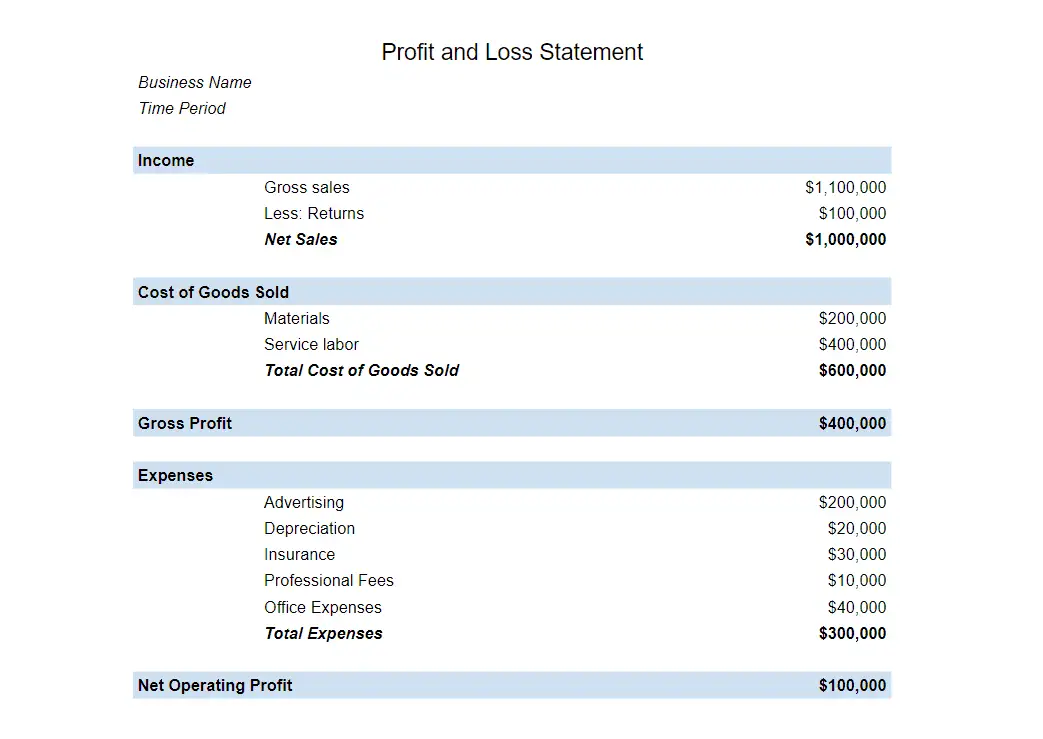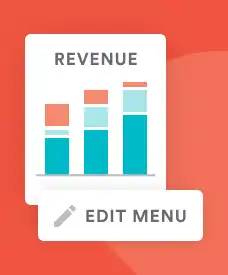Operations
How To Run a Profitable Restaurant
To run a profitable business, restaurants need to calculate their profit margin and know how to improve it.
In the restaurant industry, profits don't come easy. Keeping prices high enough to meet business demands yet low enough to entice customers is a delicate balancing act.
However, by monitoring metrics, retaining customers and staff, using technology, and applying the right dose of creativity, restaurants can become and remain profitable for decades. To equip restaurants with the know-how to become a financial success and serve their community for years to come, here’s an overview of ways to calculate, control and improve a restaurant’s profit margin.
How to Calculate a Restaurant’s Profit
A restaurant’s profit is simple to calculate and only requires two metrics:
Total Revenue
Total Expenses
Profit is determined by subtracting the restaurant’s revenue for a given time period by its expenses in that same time. Here’s how that is laid out as a formula.
Restaurant Profit = Total Revenue - Total Expenses
Say, for example, a restaurant grossed $2,000,000 in the previous year, and its expenses were $1,800,000. Using the formula above, this means the restaurant netted $200,000 in pure profit for the year.
To calculate profit margin, divide the difference between the restaurant’s revenue and its expenses by its total revenue. As a formula, here’s how that would look.
Restaurant Profit Margin = (Total Revenue - Total Expenses) ÷ Total Revenue
Using the example above, a restaurant that profited $200,000 in a year where it grossed $2,000,000 would yield a 10% profit margin ($200,000 ÷ $2,000,000). In other words, for every dollar the restaurant made that year, 90% went towards covering expenses and the remaining 10% did not. That excess money might be used to improve the business by buying more equipment, running marketing campaigns or setting funds aside for emergency reserves.

What's Your Restaurant ROI?
Bring in more money and return your investment with restaurant technology that makes real money for your business.
How to Run a Profitable Restaurant
Some things are outside your restaurant’s control. However, it’s up to you to navigate these external forces while controlling what you can control in order to turn a profit. Here are seven factors restaurateurs can control to increase the business’s profit margin.
1. Keep Track of Restaurant Metrics
A restaurant’s profitability should never come as a surprise to owners. That’s why staying on top of metrics is key. This starts with running and analyzing a profit & loss statement.
The profit & loss statement, also known as an income statement or P&L, adds up an itemized list of income and expense sources for the restaurant in a given time period.

The P&L allows the restaurant to look back on its performance for a specific time frame to assess its profitability. For example, managers can look at the P&L for a given month and realize their labor costs were higher than expected, which contributed to a low profit margin. In turn, they might investigate the matter further and uncover several instances of buddy punching and unauthorized overtime work, which can quickly be curtailed moving forward.
Some other metrics to track in a restaurant to assess its profitability include:
Cost of goods sold (COGS), which is the cost required to obtain the inventory that is sold in the restaurant. If COGS is too high, it means profit margins on menu items could be too low. Tactics like inventory management and buying from suppliers in bulk can help keep COGS manageable.
Prime cost, which is COGS plus labor costs. These costs make up most of the restaurant’s expenses — typically around 60-65%. If prime cost gets too high, the restaurant may want to check its inventory reports and previous payroll reports to uncover the cause.
Food cost percentage, which reflects the percentage of an item’s menu price comprised of ingredient costs. For example, a $10 dish with a $4 food and ingredient cost has a 40% food cost percentage. On average, food cost percentage hovers around 30% — though it varies by dish type. However, if the restaurant’s food cost percentage differs vastly from that number, it’s worth revisiting and optimizing the menu for more accurate pricing.
Read more: 6 Key Restaurant Metrics to Track to Stay Profitable
2. Monitor Inventory
Restaurant inventory management is one of the most reliable ways to control profitability. Restaurants are in the business of selling food, and if that food is not stored, prepared and sold in an organized and consistent way, it is extremely hard to become profitable.
For instance, consider a restaurant that has a target food cost percentage of 33%, but has a 20% inventory variance, which refers to the percent difference between the amount of inventory that was actually used and the amount of inventory that was recorded as being used. In this situation, for every $100 worth of food it records selling, it is actually depleting $120 worth of ingredients.
As a result, its food cost is closer to 40% of expenses — meaning profits are seven percentage points lower than they would be with no inventory variance. If the restaurant is running on a 5% profit margin goal, it now finds itself in the red and in debt.
Leveraging technology, training staff, and monitoring par inventory levels can all contribute to easier inventory management and variance reduction — making this piece of the restaurant profitability puzzle an essential yet manageable one.
3. Focus on Staff Engagement
Historically, one of the biggest problems with staffing a restaurant is retaining employees. In the National Restaurant Association’s 2024 State of the Restaurant Industry report, 27% of operators said recruiting & retaining employees will be the most significant challenge to meet this year.
What’s worse? The average cost to replace a lost employee is close to $6,000 per employee. Employees leaving a business can also have a staggering domino effect, where their peers resign in quick succession, leaving a restaurant in a persistent state of being understaffed.
In addition to direct financial costs, being short staffed puts added pressure on remaining employees to take on more tasks and work more hours. Productivity, morale, and work-life balance can all be impacted, which can spill over and negatively impact employee performance. In turn, this can hurt the customer experience through longer wait times or order errors.
Nowadays, workers who remain in the restaurant industry want more. Specifically, they’re on the lookout for better pay, benefits, and engagement. This puts restaurateurs in another financial tough spot — but the cost of lost employees can be more damaging than lost employees.
Read more: 3 Stories of Worker-Owned Restaurants
If raising wages isn’t an option, there are still methods to ensure staff feel appreciated and well-compensated. Some restaurants have implemented a kitchen appreciation fee, while others incentivize through gamification, where employees participate in friendly competition to win prizes like nightly bonuses, extra meal vouchers or additional days off. Even with thin profit margins, restaurants can creatively and sustainably make staff feel valued in their roles.
Read more: 11 Restaurant Employee Appreciation Ideas

RESOURCE
Restaurant Employee Handbook Template
Improve staff retention and centralize key information with an employee handbook for your restaurant. Grab this free template!
4. Double Down on Customer Retention
The old adage is true: It is significantly more expensive to acquire a new customer than to retain an existing one.
For restaurants, competition remains tough. Customer acquisition cost is high due to expensive online advertising costs, while delivery apps charge high fees for restaurants to appear high on their search results. Traditional restaurant advertising methods such as newspaper or transportation ads are hard to prove the ROI of, leaving restaurants unsure if their message made an impression.
While restaurants shouldn’t abandon their outbound marketing strategies, it’s often more economical to engage and retain existing customers. Loyalty programs, for instance, encourage repeat visits from guests in exchange for exciting yet reasonable incentives, such as $10 off after $100 worth of orders. Automated email marketing can be utilized to engage existing customers with other incentives that quickly pay for themselves, as BentoBox customer Dough Artisan Pizza has demonstrated.
Plus, thanks to word-of-mouth marketing, delighted customers will do much of the restaurant’s marketing themselves whenever they talk about the wonderful meal or experience they had there. Recommendations carry undeniable weight, with 89% of individuals trusting friends and family. These statistics enforce the idea that customer experience is of the utmost importance. By treating guests to a great dining experience, restaurants effectively turn their diners into their very own marketing team.
5. Create More Ordering Avenues
If there are only one or two ways customers can place an order (say, for instance, over the phone or in-person), it creates friction for both staff and guests. It can also create bottlenecks in the back-of-house alongside long lines and wait times, which could cause customers to feel frustrated and dine elsewhere.
Instead, guests should have multiple avenues to place orders. That way, staff can be more efficient and reduce wait times for food even as orders come in faster.
Restaurants should have some or all of these ordering options on top of the usual ones:
Direct online ordering through the restaurant’s website.
Restaurant self-order kiosks to cut the line length at QSRs.
Restaurant delivery apps. Granted, costs can add up on these apps, so it might be worth choosing the platforms that take the least away from the bill’s total.
Read more: The Best Online Ordering System for Restaurants in 2024

Takeout & Delivery Commission Calculator
Want to increase your profits?
Calculate your monthly savings if you use direct online ordering vs. third-party marketplaces.
6. Expand the Restaurant’s Offerings
Why profit solely off of traditional restaurant meals?
Restaurants are in the position to offer not just one, but several other options — many of which have high profit margins. Here are some additional ventures to consider:
Hosting restaurant events. Restaurants can profit off of leasing out their space during slower sales periods. Private events and space rentals often require a minimum food order requirement and a room rental fee, while public events and parties might require a ticket to attend. Need inspiration? Check out these 38 Restaurant Event Ideas to Drive Revenue.
Selling restaurant merchandise. A restaurant’s biggest fans might want to sport a t-shirt with its logo or drink out of a branded pint glass from their favorite brewery.
Offering meal subscriptions. They boomed in popularity during the pandemic, but restaurant meal kits are still an effective way to sell bulk products and/or ingredients at a high markup.
Providing catering. Catering can be great for the bottom line with large order sizes and minimum order requirements
Recommended Resources:
7. Use the Right Restaurant Technology
It’s true — restaurant technology costs money.
However, the right restaurant technology will save money in the long run. That’s why it’s important to cultivate restaurant tech that saves time and provides value. For example, restaurant payroll software saves labor hours each week and points out any overtime or restaurant compliance errors. Managers also benefit from labor software, which streamlines the scheduling process.
Front-of-house staff benefits from easy-to-use point-of-sale software, which enables them to send orders faster and increase table turn time.
Ultimately, however, it’s imperative that as many systems as possible integrate with one another for maximum value. For example, if online ordering syncs with the POS, which also syncs with inventory software and scheduling software, the restaurant’s ecosystem is interconnected seamlessly. It becomes evident how any one aspect of the restaurant impacts another, uncovering actionable ways that restaurants can save time and money.
Read more: 10 Types of Restaurant Technology You Need in 2024
Keeping Restaurants in the Black
While every restaurant faces specific challenges to stay profitable, those that follow these best practices are much more likely to succeed. Engaging customers and staff, utilizing restaurant technology and staying on top of numbers are just a few proven ways to run an efficient, successful business. Without these insights and proactive measures, restaurants will struggle to stay afloat. Thankfully, these steps are achievable and will help any restaurant become and remain profitable.

BentoBox Marketing & Commerce Platform
Deliver Smarter Hospitality
Want to stand out online, bring in more money, engage your diners, and streamline operations?
Recommended

Marketing
5 Menu Description Tips To Drive More Sales
April 12, 2024
There’s a science behind effective menu writing. Here’s what you need to know.

Commerce
How to Use Ecommerce to Boost Your Restaurant's Sales
June 24, 2020
Why restaurants should offer gift cards, merchandise and more online.

Operations
6 Key Restaurant Metrics to Track to Stay Profitable
July 18, 2019
These are the metrics you should be tracking regularly.

